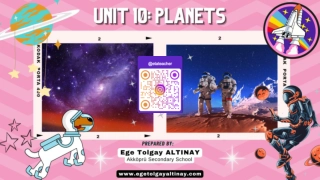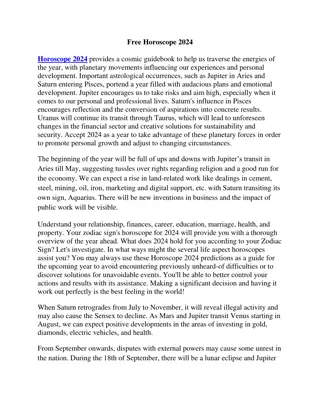Uranus
Explore the intriguing details about Uranus, ranging from its unique pronunciation debates to being the first planet discovered by William Herschel in 1781. Despite its faint visibility in the night sky, Uranus has a rich history of observation and mystery. Learn about its significance in astronomy and the interesting etymology of its name.
Download Presentation
Please find below an Image/Link to download the presentation.
The content on the website is provided AS IS for your information and personal use only. It may not be sold, licensed, or shared on other websites without obtaining consent from the author. Download presentation by click this link. If you encounter any issues during the download, it is possible that the publisher has removed the file from their server.
Presentation Transcript
Uranus Written by David Ilsley Image: flickr.com
When people think of this planet, they might think of the pale blue dot you can see through a telescope; they might think of a cold ball of gas and ice; they might even think of the Greek god of the sky. Image: World History Encyclopedia
But, more likely, they will think about how youre gonna pronounce it! There are two common pronunciations (emphasis on the first syllable (YOU-rin-us) and emphasis on the second syllable (you-RAIN-us) and there is a lot to be said for (and against) each. YouTube Video: How to Pronounce Uranus
Wikipedia says: Most linguists trace the etymology of the name to a Proto-Greek form Worsanos ( , enlarged from uorso- (also found in Greek (our ) 'to urinate , So Urine-Us isn t entirely a coincidence.
Below are the Australian Broadcasting Corporation s guidelines on the pronunciation. The standard Australian pronunciation is 'yooh-RAY-nuhs . But when using reports and material from abroad (where it is sometimes pronounced YOOH- ruh-nuhs), match pronunciation with that used in the report . Image: Wikimedia Commons
For better or worse, the pronunciation You RAIN us will be used here. So . . . Now for some astronomy. Image: Rawpixel
Uranus was the first planet to be discovered. Mercury, Venus, Mars, Jupiter and Saturn were known from ancient times as was the Earth, though the Earth wasn t always known to be a planet. It was discovered by William Herschel in 1781 with a home-made telescope, though, for a long time afterwards, Herschel insisted it was a comet, despite other astronomers saying it was probably a new planet. Image: Openclipart
Uranus is just bright enough to see with good eyes on a dark night (magnitude 5.38 to 6.03) and it seems that it had been observed several times before, the first time in 128 BCE, though no one had realized what it was.
Uranus is the seventh planet from the Sun, further than Saturn, but closer than Neptune. The picture below shows its size compared to the other planets and the Sun. Image: flickr.com
The statistics of Uranus, along with the other seven planets are shown in the table below. Distance from Sun (AU) Orbital Period (years) Rotation period (days) Diameter (Earths) Number of moons Planet Mercury 0.4 0.25 0.4 59 0 Venus 0.7 0.6 0.9 243 0 Earth 1 1 1 1 1 Mars 1.5 2 0.5 1 2 Jupiter 5 12 11 0.4 79 Saturn 10 30 9 0.4 82 Uranus 20 84 4 0.7 27 Neptune 30 160 4 0.7 14
The eighth planet is of course Neptune. Uranus and Neptune are so similar that most of what we will say about Uranus is also true of Neptune. Image: flickr.com The two planets are almost exactly the same size, the same mass, the same composition, the same internal structure and the same temperature. Even their colours are sort of similar.
Jupiter, Saturn, Uranus and Neptune are often called the gas giants to distinguish them from the terrestrial planets Mercury, Venus, Earth and Mars. Image: Wikimedia Commons But Uranus and Neptune are quite different from Jupiter and Saturn. They are smaller. But there is a more important difference.
Jupiter and Saturn are made almost entirely of hydrogen and helium with just a small rocky core. Uranus and Neptune, however, have more methane, ammonia and water than hydrogen and helium. These are called ices, though they are actually hot fluids. Because of this, Uranus and Neptune are more properly called ice giants.
Carbon, nitrogen and oxygen are, after hydrogen, helium and neon, the most common elements in the universe. Reacting with hydrogen, they produce methane (CH4), ammonia (NH3) and water (H2O). So, it should be no surprise that these compounds are common. Image: en.wikipedia.org (cropped)
Uranus diameter is 4 times that of Earth. Its mass is 14.5 times that of Earth. Image: Wikipedia It contains 0.5 to 3.7 Earth masses of iron and rock, 9.3-13.5 Earth masses of ices and 0.5 to 1.5 Earth masses of hydrogen and helium.
At the extreme pressures in Uranus mantle, it is possible that the methane molecules break down into carbon and hydrogen and that the carbon atoms condense into diamonds which rain down through the mantle like hail. It is thought that the base of the mantle could be a sea of liquid carbon with diamond-bergs floating on it. Image: Wikipedia
Although the mantle is called ice, its temperature ranges from 2000 to 5000 K. The temperature at the visible surface is around 80 K (-190 C), making it the coldest of the 8 planets, slightly colder than Neptune. It has a very low heat flux from inside, for reasons which are not understood.
One unusual thing about Uranus is the inclination of its axis of rotation. That for the Earth is 23.5 . Those for the other planets are shown below. Image and video: Wikipedia
At times, the planet has its poles pointing almost straight at the Sun. For 42 years of its 84-year orbit, it is daylight at the North Pole. And for the next 42 years it is night-time. Image: flickr.com
As with Jupiter, Saturn and Neptune, there are rings around Uranus, as shown in this Hubble image. They are much less spectacular than those of Saturn and the material they are made of is fairly black. Image: flickr.com
Image: picryl.com It also has 27 known moons, the 5 largest being Ariel, Umbriel, Titania, Oberon and Miranda, all named after characters from Shakespeare's Midsummer Night s Dreamand Alexander Pope s The Rape of the Lock. The rings and most of the moons orbit in the equatorial plane of the planet.
This suggests that the unusual rotation of the planet and the moons and rings all resulted from the same event. This might have been the glancing collision of two smaller planets at the time when the planets were forming by the amalgamation of smaller bodies. Image: Wallpaper Flare
If the top (north pole) of one planet struck the bottom (south pole) of the other, the combined body could have ended up spinning around a horizontal axis. Some of the debris from the collision could have been thrown off to form the moons and the rings. Image: Wallpaper Flare
One last thing: Along with its copious methane and other noxious gases, Uranus is known for its wind. Winds can reach 900 km/h, exceeded in the solar system only by Neptune with winds up to 2400 km/h. These winds tend to be confined to fairly narrow bands. And, of course with no solid surface, they don t do any damage like they would on Earth. Why the ice giants have such strong winds is not fully understood. Image: flickr.com
The End Image: flickr.com



